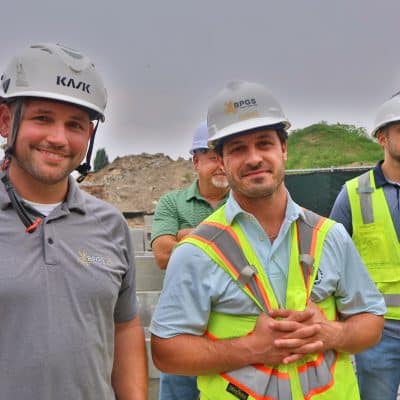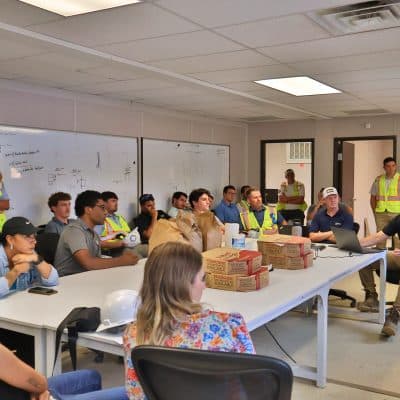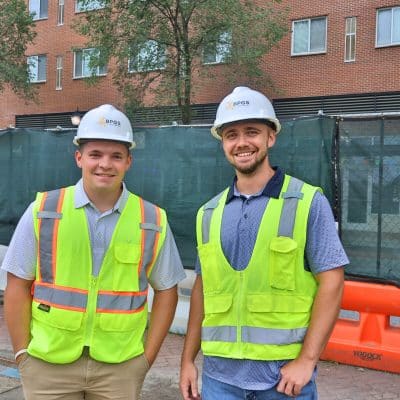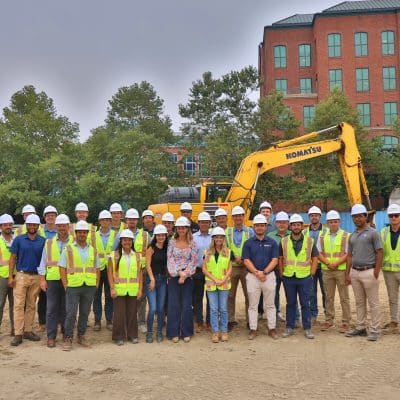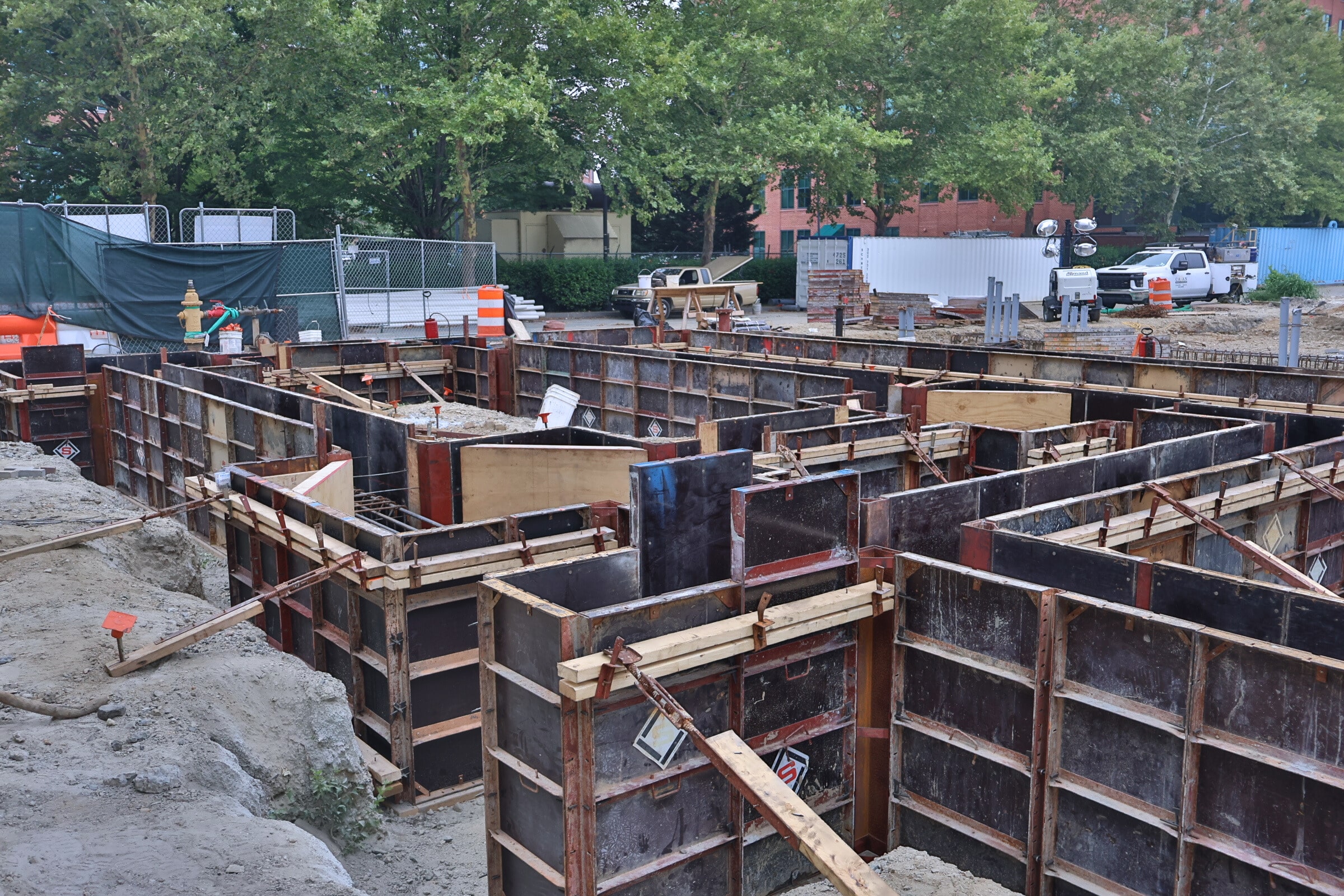
Build and Learn: Concrete Foundations
August 19, 2025 2:03 pmAt BPGS Construction, continuous learning is embedded in the culture. Our company is committed to supporting associate growth through shared knowledge and team collaboration. One key initiative is our Build and Learn sessions, where associates come together on active job sites to explore unique project elements and tackle challenges faced in the field. This session focused on concrete foundations at Justison Landing Parcel 1 (JLP1), a 164 luxury apartment community on the Wilmington Riverfront.
Foundations are critical to every building, but selecting the right type can be complex, especially when dealing with varying soil conditions, heavy structural loads, multi-story designs, and unforeseen obstacles. Even small miscalculations in foundation design or sequencing can lead to settlement issues, spiked costs, and delays. These challenges require careful planning, technical expertise, and real-time problem solving.
At BPGS Construction, we address these obstacles by tailoring foundation solutions to the specific needs of each project, structure, location, and condition. At JLP1, the team focused on evaluating the soil conditions, project design, and construction sequence to ensure stability and efficiency. During this month’s Build and Learn, Project Engineer, Liam Moran and Senior Project Engineer, Denis Spaventa led a discussion on foundation work, how we tackle challenges—and what makes our methods effective.
Foundation Strategy at JLP1
Selecting the right foundation type is about more than following a standard design. It’s about understanding soil conditions, building loads, and how the structure interacts with the subgrade. At JLP1, we relied on a combination of grade beams, pile caps, and mat slabs to meet the project’s unique requirements:
-
Grade Beams: Chosen to provide stability where soil conditions were less consistent, while carrying loads from structural steel and load-bearing walls to deeper foundation elements. Their use ensured the superstructure was well-supported without overloading any single area.
-
Pile Caps: Implemented where point loads from columns or concentrated areas exceeded the capacity of shallow foundations. The pile caps distributed these loads efficiently to underlying piles, providing a secure base in areas of weaker soil.
-
Mat Slabs: Used under the heaviest load points, including stair and elevator shafts, to spread concentrated weight evenly across a large area. This approach minimized settlement risk and allowed for a more predictable, stable performance across the building footprint.
Construction and Coordination
Concrete foundations require careful sequencing and cross-team coordination. At JLP1, the process included surveying and layout, excavation, mud mat pours, rebar and sleeve installation, formwork setup, concrete placement, and backfilling with insulation where necessary. Building Information Modeling and underground coordination were essential to ensure that pile locations, grade beams, and mat slabs aligned precisely with the superstructure. Further, it was crucial to carefully plan plumbing and pipework to avoid conflicts or rework later in the construction process. Close collaboration between structural, mechanical, and plumbing teams ensured that all systems integrated smoothly, maintaining schedule efficiency and overall quality.
Lessons from the Field
-
Team communication is critical: Ensuring pile placement, grade beam alignment, and MEP sleeve coordination avoids costly rework.
-
Plan for environmental variables: Groundwater management, rainwater control, and weather conditions directly impact schedule and concrete quality.
-
Anticipate and adapt: Even the best plans can encounter unforeseen challenges on-site. Prepare to adjust sequencing, resources, or methods while maintaining safety and quality is key to keeping projects on track.
-
Third-party oversight matters: Testing confirms compliance and verifies performance, supporting long-term reliability.
Foundation Implementation
Even small mistakes in concrete foundations design or installation can impact structural integrity and overall project efficiency. BPGS combines soil assessment, foundation selection, adaptability, and team coordination to deliver stable, reliable foundations. Strategic scheduling and planning for environmental factors, like groundwater or unexpected site conditions, keeps the project on track and helps avoid costly delays.
If you’re passionate about learning, collaboration, and driving innovation in the field, we’d love to have you on our team. Explore our current job opportunities and see how you can grow with us.


